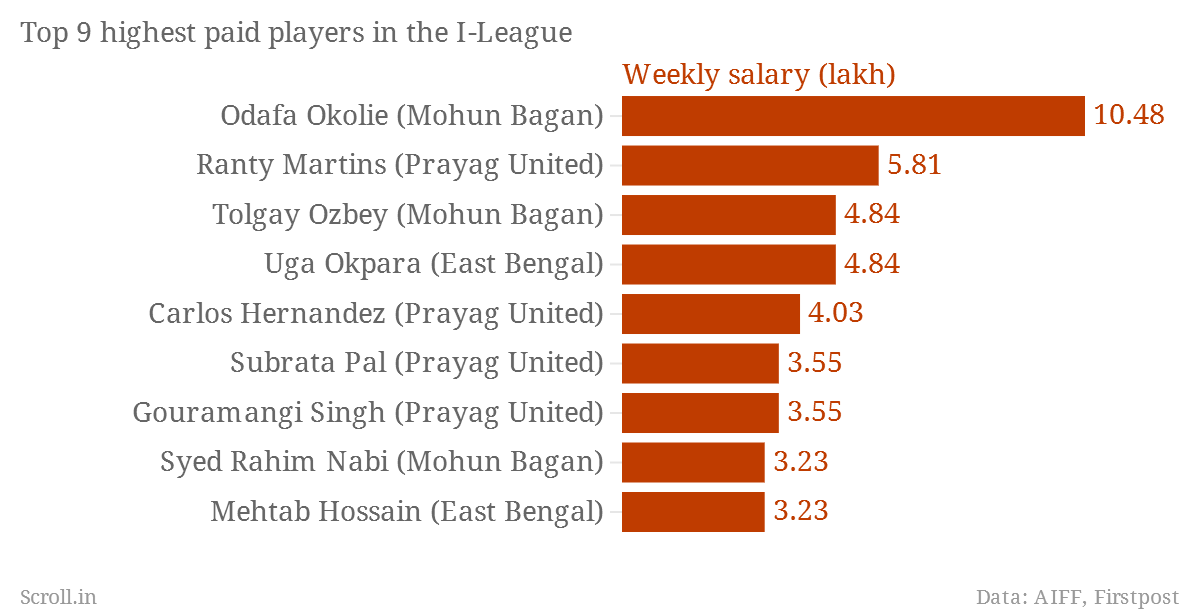The Indian Super League, modelled on the cricket IPL, will start its inaugural season on October 12.
With the draft for both the international and domestic players for the Indian Super League being completed, one thing is certain: the top-earning players in Indian football's Indian Super League and Indian cricket's IPL are all Indian. However, the average salary for foreigner footballers is higher than the wages of Indian sportsmen in the Indian Super League.
On a weekly basis, players in the Indian Super League will earn more than sportsmen in the I-League, the Indian equivalent of the English Premier League. Super League Players like Subrata Paul and Sayed Rahim Nabi will get Rs 80 lakhs in addition to a 33% fee if they are loaned to other teams. The Super League is putting the emphasis on Indian players and structuring the team around them.
In the I-League, teams are trying to woo the foreign players with salary boosts and housing, some even go as far as giving out Mercedes Benz cars.




Though IPL cricketers get paid more than English league footballers per week, total salaries are higher in the English football league. That's because the English football tournament lasts 20 weeks compared to six weeks of the Indian Premier League. In addition, footballers in the English Premier League and other leagues are paid annual wages that include the summer period, rather than just for the season.
However, the highest-paid footballers get more than the highest-paid cricketers. Consider Lionel Messi, the highest-paid footballer in the world, who gets Rs 8.1 crores per week for turning out for Barcelona FC . That figure is four times the weekly pay of MS Dhoni, the highest-paid Indian Premier League player.
Though Indian football fans are still relatively low, things are looking up. In 2010, the All India Football Federation, India's football governing body, struck a Rs 700-crore 15-year deal with IMG-Reliance to boost the sport in the country. IMG formed a joint venture with Reliance Industries, India's largest company, to develop and own sports, fashion and entertainment properties.
This has resulted in more football matches being televised and attendances at games increasing. With the next edition of the U-17 World Cup being played in India, football's popularity is likely to grow further.












